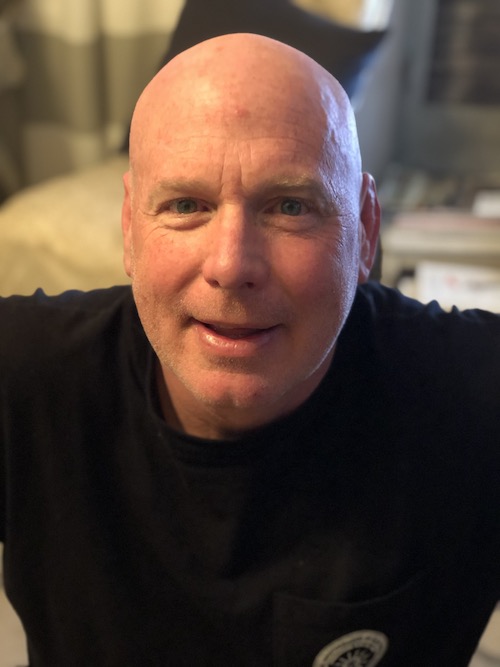The past two decades, shop steward Tom Mohan has wired at least a thousand exhibitions in New York City’s mammoth Javits Center. Food, flowers, travel, the famous car show. And now a hospital.

|
|
Local 3 shop steward Tom Mohan has set up more than 1,000 events and trade shows during his 22 years at NYC’s Javits Center.
|
Local 3 crews helped construct 2,000 rooms divided by wall panels that were supposed to be enclosing booths of beauty products, eyewear and restaurant supplies, among the canceled spring events.
Setting up trade shows can employ 70 electricians or more. In late May, with no events and the hospital emptied of patients, only a small maintenance team remained.
“I’m extremely nervous for my brothers and sisters that got laid off,” said Mohan, a 35-year member of Local 3 and father of an apprentice. “Everything’s been canceled through the summer.”
When workers arrive at the Javits these days, they pause at a turnstile, where a uniformed service member asks about coughs, fevers and contact with anyone who’s tested positive. A thermal camera mounted about 10 feet away takes their temperature. “At first they did it with a drone,” Mohan said.
They wear surgical masks, keep their distance and follow all other safety rules, but it’s less rigid than when they worked on the hospital.
“If you were going to the hospital floor, there was only one way in. You had to stop there and put on a gown, goggles, N95 mask and gloves. You would take it all off before exiting out the other side.”
Even with all the precautions throughout the center, “it was still a little nerve-wrecking,” Mohan said. “You were always afraid you might bring something home to your family.”
Mohan marveled at the precision of the Army Corps of Engineers and other military that ran the hospital project and remain on site. “It was pretty wild to see, how they came in and took the building over, all the equipment that they had. It was really impressive.”
Although traffic has picked up, he said driving in from Queens was like the “zombie apocalypse,” until the city slowly began to reopen. “Nobody was on the streets,” he said.
After work, he leaves his shoes outside the door, and puts his clothes in a plastic bag. He doesn’t wear them again until they’re washed.
More family time has been blessing, but he misses the nights when he’d head to the lively union hall after work.
“Generally, you come home and you have other things to do — a union meeting, a committee, or just being an active Local 3 member,” he said. “That stuff was a big part of my life. I loved doing it, and it got taken away.”